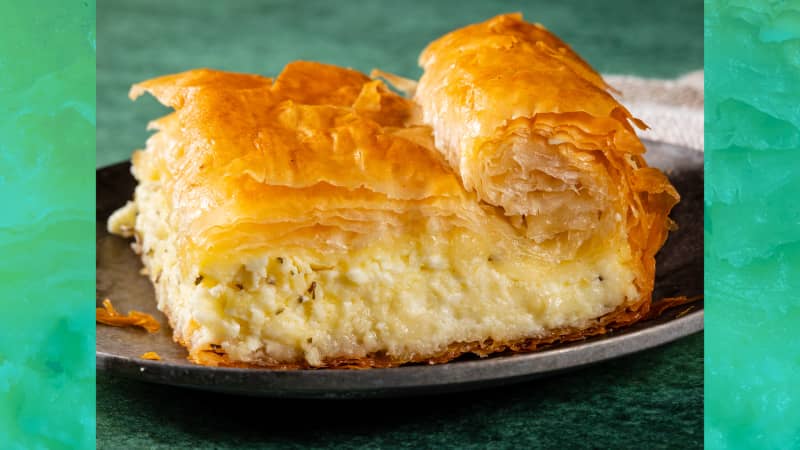While feta cheese is still the most popular and widely available in American supermarkets, there are plenty of other Greek cheeses you could be enjoying. They are made primarily with a higher percentage of sheep’s and goat's milk and offer a wide variety of tangy and grassy notes based on the region of the milk. Flavor profiles vary from mild, milky, and briny to nutty or slightly spicy, and textures range from creamy, crumbly, grate-able, or even searable.
6 Greek Cheeses You Should Seek Out
Published Sept. 8, 2022.

The Complete Cook's Country Season 15 TV Show Cookbook
The 15th anniversary edition of this best-selling fan favorite contains every recipe from every season, plus exclusive variations and a 55-page shopping guide. You'll enjoy reading this cookbook as much as cooking from it!We used a combination of creamy sheep’s-milk feta and nutty graviera cheese to make our Tiropita, a rustic Greek cheese pie served as breakfast on the go, a light lunch, or savory appetizer. Give graviera a whirl in this recipe if you are lucky enough to find it stateside.
Here are some common Greek cheeses you might be able to find in (or special-order from) your supermarket or specialty foods store.
Kasseri
Kasseri (used in the custardy bechamel topping of the iconic Greek casserole moussaka) is a semihard cheese made predominantly with sheep’s milk and no more than 20 percent goat’s milk. It’s made using the “pasta filata” technique of stretching and pulling, used with Italian mozzarella and provolone cheese, before salting and aging, giving the cheese a springy and slightly stringy and chewy texture. Low-moisture, whole-milk block mozzarella cheese (not fresh mozzarella) or provolone is an acceptable substitute for this mild cheese.
Graviera
Graviera, which means “Gruyère-like,” is made with combinations of cow’s, goat’s, and sheep’s milks (depending on the region in which it is produced). Graviera is nutty, sweet, and buttery. The longer it ages, the nuttier it tastes; not surprisingly, Gruyère is a good substitute for graviera.
Kefalotyri
Kefalotyri, which means “head cheese,” is a salty cheese made with sheep’s milk, goat’s milk, or both. Resembling Pecorino Romano and Parmesan cheese, this dry cheese is sharp and spicy (and becomes more robust as it ages). It is nice for grating on pasta or shaving into salads. Because of the similar texture and flavor profiles, Pecorino Romano and Parmesan make good substitutes for kefalotyri.
Kefalograviera
Kefalograviera is made with sheep’s milk or with sheep's milk and goat’s milk; it has a nutty flavor and is quite salty. As its name implies, kefalograviera is like a combination of sharp kefalotyri and mellow graviera. It is firm enough to hold up well to frying and grilling.
Manouri
This semisoft cheese is light and fluffy, creamier and less salty than feta, and sold fresh/young. It is made using whey left from feta production, giving it unique, slightly lemony notes. In recipes, you can use fresh goat cheese or (sometimes) cream cheese in place of manouri.
Dry Myzithra
Dry myzithra is made from fresh myzithra—the spreadable version that is considered the mother of all Greek whey cheeses. Fresh myzithra is sweet, milky, and typically unsalted, like ricotta. It’s made by combining raw sheep’s or goat’s milk with the whey leftover from previous batches of myzithra or other hard cheeses made with sheep’s or goat’s milk (similar to the process of making Italian ricotta cheese). Dry myzithra is myzithra that has been aged and dried. It has a hard texture and is salty in flavor, similar to its common substitute ricotta salata. Dry myzithra can be grated and served over pasta or shaved and served in salads.
